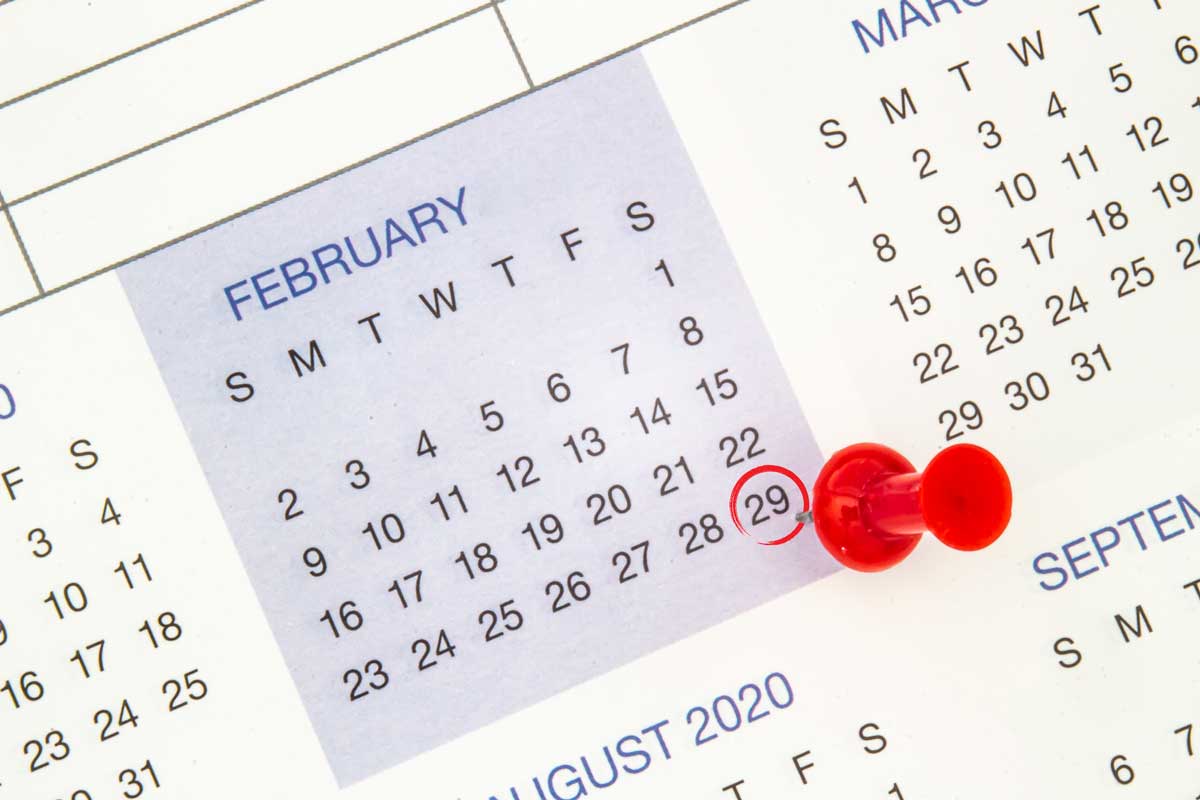Every four years — well almost every four, but we’ll get to that later — an extra day gets tagged on to the month of February.
Humans have been practicing Leap Year since the days of Julius Caesar and the Roman Empire, but why?
UCF Physics Professor Josh Colwell explains the science behind the need for Leap Year and other facts you may not know about the bonus day.
Leap Year exists because of the time it takes the Earth to orbit the Sun.
There are 365 days in most calendar years, but in the time it takes for the Earth to go around the sun once, our planet actually spins 365 and nearly a quarter times. The reason we care about that extra quarter is because the Earth has seasons.
To know when to plant and harvest your crops it’s nice to have a calendar where spring always starts in March and the longest day of the year is in June and the shortest day is in December.
“In order to have that consistency in the seasons from year to year, we have to periodically make a correction [to the calendar].”
Because there’s that extra quarter of a day in the year, it means we have to reset our calendar periodically. Otherwise, start dates of seasons would gradually drift by a quarter of a day every year. After 40 years, we’d be 10 days off. So the start of the season would be 10 days different than it would be 40 years before. After hundreds of years, summer could be starting in November. So in order to have that consistency in the seasons from year to year, we have to periodically make a correction.
A Leap Year happens every four years except for when it doesn’t.
We add a leap day every four years except if it is a year that is divisible by 100 unless it happens to also be divisible by 400. Did I confuse you enough with that formula?
So that means 1900 was not a leap year. Nor was it a leap year in 1800, nor will it be in 2100. But 2000 was a leap year because it was divisible by 400. We skip it in three out of every four of those century years. We will skip it in 2100, 2200 and 2300 but we will not skip it in 2400.
We do this because a year is not exactly 365.25 days long. It’s actually closer to 365.24 days long. The 365-day calendar including Leap Year was adopted during Julius Caesar’s time, but they didn’t account for that small difference. This minute discrepancy meant that the “Julian Calendar” drifted off course by one day every 128 years, and by the 14th century it had drifted 10 days off schedule. Pope Gregory XIII fixed the issue by instituting a revised “Gregorian Calendar” in 1582, which we still use today. Fun fact: when this calendar was created, to fix that 10 day drift, Oct. 4, 1582, was followed by Oct. 15, 1582. By skipping those years not divisible by 400, we keep the calendar in check.
Leap Year doesn’t necessarily have to occur in February.
Our collection of months is very peculiar. If we have a calendar that’s based on a 7-day week, there are 52 weeks plus one day in 365 days. Theoretically, you could have 13 months of 28 days and then have one loaner day — say New Year’s Day — that isn’t in a month. The particular mish-mash of 28-30-31 days that we have in our calendar is a question for an historian more than an astronomer.
February gets it because it is shorter than the other months. But it really doesn’t matter. You could put it anywhere.
We also observe leap seconds — they’re just not as well known.
“Even having Leap Year doesn’t get our calendars exactly right. So periodically the International Earth Rotation and Reference Systems Service adds leap seconds to our daily lives we don’t notice.”
Every four years we add a day — except not quite every four years because we have that divisible-by-400 rule. So even having Leap Year doesn’t get our calendars exactly right. So periodically the International Earth Rotation and Reference Systems Service adds leap seconds to our daily lives we don’t notice, especially now that most people’s clocks are updated automatically on their cell phones. We add a leap second less than once a year. There have only been 27 leap seconds since 1972. They are based on very precise measurements of the rotation of the Earth, which isn’t perfectly constant, to bring things into alignment.
Ultimately these things are tied to the motion of the Earth around the sun and the exact rotation of the Earth and little tiny things adjust that interaction between the Earth and the moon that causes little slow downs and speed ups. All of these things are little adjustments so that our written calendar, which we use to organize our daily lives, lines up as closely as possible to the astronomical calendar, which for us is important because of seasons.
If we lived on any other planet besides Earth, we’d still need to observe Leap Year.
On some planets, like Venus, it rotates so slowly, that the difference between the time it takes to rotate and the time from noon to noon is very extreme. The longest solar day of any of the planets in the solar system is on Mercury. Its day is about 176 Earth-days long. Venus’ day is 117 Earth days long and it rotates backwards compared to the direction it goes around the sun. Uranus is tipped almost exactly on its side so for its northern summer, the sun is directly over the north pole. And for its northern winter it would be complete darkness in the northern hemisphere for years because it takes it 84 years to go around the sun. So the seasons can be quite extreme on other planets. We’re set up well here on Earth.







